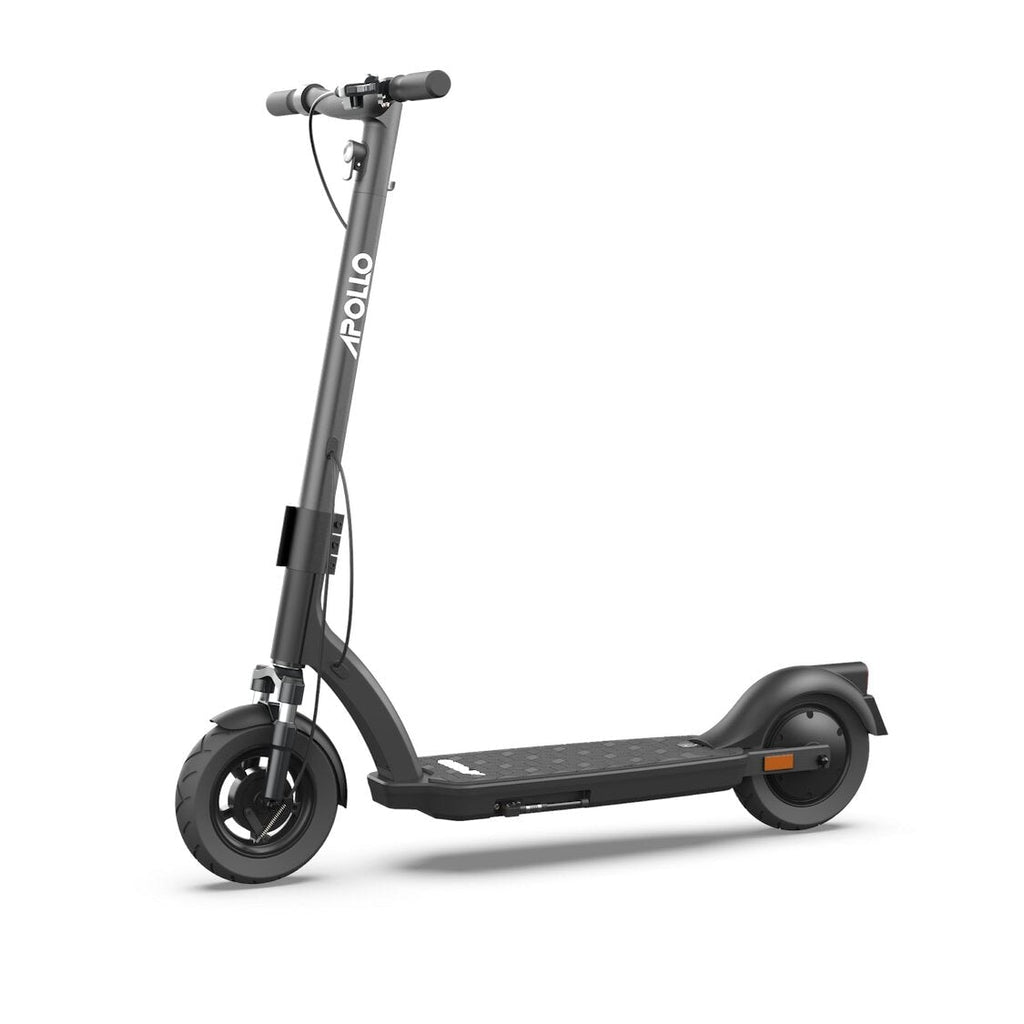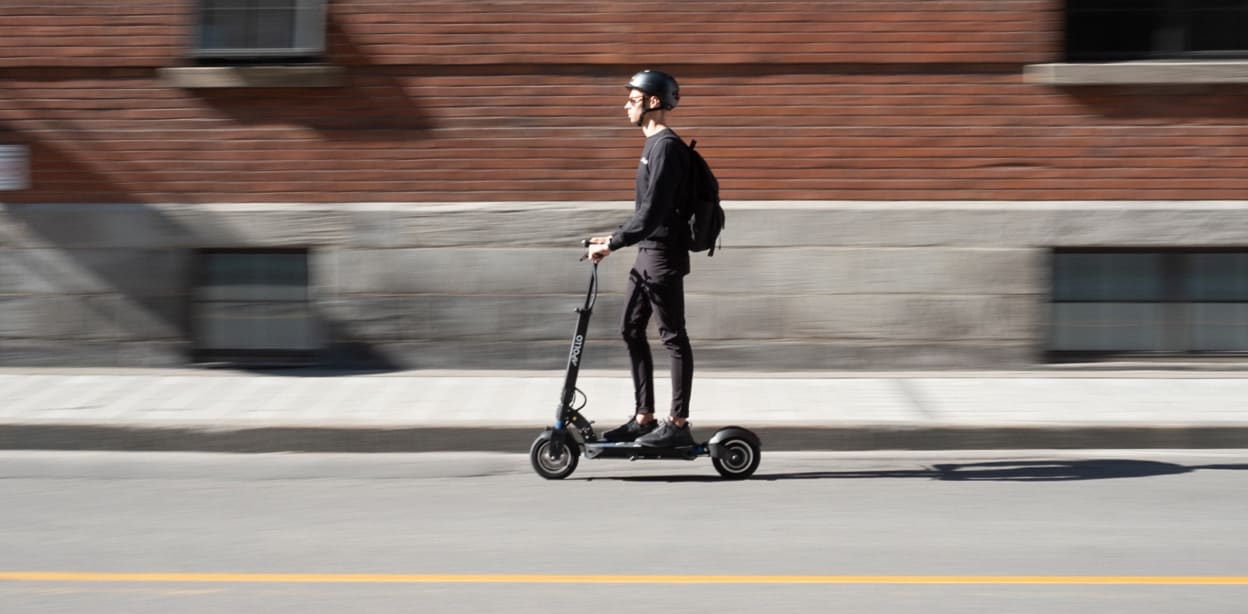Apollo Scooter Buying Guide
Posted by PETER HARVEY

Apollo Electric Scooters have been rigorously tested and certified safe for use by any rider over the age of 18. As an industry leader, Apollo is committed to delivering superior quality products at an affordable price point.
This is not the Razor scooter from your childhood. It’s the real deal.
But that also means that your purchasing decision is based on a lot more than just matching the colour and style to your helmet and knee pads. More options lead to more power, but also to more confusion—that is if you don’t know what to look for.
This buying guide will cover everything you need to know in order to find, identify, and purchase the right electric scooter.
Features of an Electric Scooter
Just like buying a new car, every customer will have different needs. Purchasing an electric scooter that complements your lifestyle and terrain requires a brief understanding of what these features are, how they relate to each other, and what “quality” actually looks like.
Price: How Much Does an Electric Scooter Cost?
Beginners on a budget will be able to purchase an electric scooter for as little as £300. Naturally, however, this price range is confined to low-powered motors, limited speeds, unsophisticated handling, and minimal range—great for light, recreational use, but not much more.
Powerful, vehicle-grade scooters usually start around £700 for a solid, entry-level option and rise as high as £2,000. At this price, you can expect powerful motors, exceptional speeds and range, and top-notch suspension and braking capabilities.
If you’re looking at electric scooters in this price range, ensure they’re also best-in-class in the following categories—after all, the cost has to match the value.

Speed: How Fast Can an Electric Scooter Go?
The top speed of an electric scooter depends on its motor:
- The average single-motor often reaches speeds around 15 to 20 MPH (24 to 32 KM/H). Apollo single-motor scooters, however, can go as fast as 31 MPH (50 KM/H).
- A high-powered dual-motor reaches speeds of 30 MPH (40 KM/H) with relative ease. Apollo dual-motor scooters are among the fastest electric scooters, boasting top speeds of 34, 38, and 44 MPH (54, 61, and 71 KM/H).
Weight: How Much Does an Electric Scooter Weigh?
Understandably, the highest-powered scooters are also the heaviest. Despite the impressive advances in technology, having not one but two sturdy motors is bound to add a little extra weight.
But absolute weight isn’t a good indication of anything—instead, you have to consider the scooter’s weight compared to its price, range, power, and speed.
These standard denominations are in line with the current market specs:
A scooter’s weight is usually directly linked to its maximum load. A sturdy, durable scooter will be able to support a heavy adult without losing much, if any, functionality. Our Apollo Phantom scooter, for example, has a maximum load of 300 pounds, one of the highest in the industry. Even our lightest scooter—the Apollo Air—can support up to 220 pounds.

The weight you’re looking for depends on the lifestyle your scooter has to fit into.
You’ll want a…
-
Solid, lightweight scooter if you:
-
Take your scooter on public transportation
-
Have to carry it up the stairs
-
Mostly ride in the city or other crowded areas, where high speeds are not as important
-
Need something budget-friendly
-
Powerful, top-tier performance scooter if you:
-
Only seldom have to fold and carry your scooter
-
Ride in wide-open spaces or on the roads and need to, or simply want to, reach top speeds
-
Are interested in power and performance over price
Regardless of which end of the spectrum you lean towards, you want the absolute most that the weight category can offer.
For example, Segway’s Ninebot Kickscooter MAX weighs slightly more than the Apollo City scooter (41.2 LB compared to our 39 LB) yet has a maximum speed of only 18 MPH (29 KM/H). That’s just 72% of our scooter’s top speed, 25 MPH (40 KM/H).
For every extra pound you have to carry, you should expect a bump in speed, power, or range—that’s a scooter that makes every bit of weight worth it.
But when it comes to actually carrying your scooter on the train or up the stairs, weight isn’t the only thing that’s going to impact that experience. You have to think about it in tandem with portability.
Portability: How Small Are Electric Scooters When Folded Up?
The most portable electric scooters on the market boast dimensions of about 40” long, 17” tall, and just a few inches wide. For context, that’s about the length of a guitar and the height of a bowling pin—two things people can effortlessly carry around in one hand.
Apollo’s scooters fold up even smaller than that, with the Apollo City coming in at 43” by 15” and the Apollo Air measuring just 47” by 22”.
The stem of the scooter measures about an inch or two in diameter, a size that most teens and adults can grasp as easily as the handle of a baseball bat.
Range: How Far Can an Electric Scooter Go on One Charge?
If you’re riding your scooter around the neighbourhood on your day off, range isn’t such a big deal. But if you’re planning on commuting to and from work?
Range becomes an essential feature.
A standard scooter’s range falls anywhere between five and 40 miles (eight and 64 KM) per charge. However, anything below 15 or 20 miles (24 to 32 KM), and especially something as low as five miles, will quickly become inconvenient and irritating, even on those ‘round-the-block joy rides.
But for a solid scooter especially, you’ll want something with at least 28 or so miles (45 KM) of range. The Apollo Phantom scooter boasts our most impressive range with up to 40 miles (64 KM) on one charge.
There are other factors that affect a scooter’s actual range as well, including:

Quality & Safety: What Are The Most Important Safety Features & Construction Materials?
Your knack for adventure and need for speed should never come at the expense of your safety—both your physical well-being and your peace of mind while riding.
Here are the top safety specs to look for when buying an electric scooter:
-
High-quality building materials – The conventional option for quality, durable scooters is industrial aluminum. Apollo uses forged aluminum across our product line and even takes it one step further with the Apollo Phantom. Our proprietary build uses aerospace-grade aluminum, the same material used in airplanes.
- Effective braking systems – There’s just no room for error when it comes to braking. That’s why safe scooters will use a multitude of brake types, including mechanical disk brakes or hydraulic brakes as well as electric regenerative hand braking.
- High-visibility lights – You have to be able to both see and be seen when riding. Scooters that prioritise safety will feature, at minimum, bright lights at the front and back. Some Apollo scooters are equipped with additional safety lights, including on the handlebars, under the deck, and on the footrest.
When you’re travelling as fast as you are on an Apollo scooter, you need high-quality materials and effective safety features that get you to your destination in one piece.

